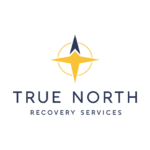Lean has become increasingly popular in recent years, particularly among young people influenced by social media and popular culture. But what exactly is this dangerous substance, and why is it causing so much concern among healthcare professionals and addiction specialists?
What Is Lean?
Lean, commonly known as “purple drank” or “sizzurp,” is a recreational drug mixture that combines prescription-strength cough syrup containing codeine and promethazine with soda and often hard candy. This purple-colored concoction has gained notoriety through its association with hip-hop culture and social media presence.
The drink gets its distinctive purple color from the cough syrup, which is why it’s often called “purple drank.” Users typically mix it with clear sodas like Sprite or Mountain Dew, and add hard candy like Jolly Ranchers for sweetness and flavor.
What Does Lean Stand For?
The term “lean” comes from the way users tend to physically lean or slump after consuming the drug. This is because codeine, the main active ingredient, is an opioid that attaches to opioid receptors in the brain and spinal cord, creating feelings of relaxation and sedation.
Other common street names for lean include:
- Purple drank
- Sizzurp
- Dirty Sprite
- Barre
- Texas Tea
- Syrup
Key Ingredients in Lean
Primary Components
Codeine Cough Syrup: The main ingredient that makes lean dangerous and addictive. Codeine is a prescription opioid typically used to treat mild to moderate pain and suppress coughs.
Promethazine: An antihistamine that enhances the sedative effects of codeine and can cause drowsiness and dizziness.
Soda: Usually clear sodas like Sprite, 7-Up, or Mountain Dew serve as the base liquid.
Hard Candy: Jolly Ranchers or other hard candies are added for flavor and to mask the bitter taste of the cough syrup.
Additional Ingredients
Some users may add:
- Alcohol (significantly increasing the danger)
- Other medications
- Different types of candy or flavorings
What Kind of Drug Is Codeine?
Codeine is an opioid medication that works by attaching to opioid receptors in the brain and spinal cord to block pain signals. It belongs to the same family of drugs as morphine, oxycodone, and heroin, though it’s considered less potent than these substances.
How Codeine Works
When codeine enters the body, it:
- Converts to morphine in the liver
- Binds to opioid receptors in the brain
- Blocks pain signals
- Triggers dopamine release, creating feelings of euphoria
- Slows down the central nervous system
Medical Uses of Codeine
Codeine is legitimately prescribed for:
- Mild to moderate pain relief
- Severe cough suppression
- Sometimes combined with other medications for specific conditions
What Happens When You Get a Lean?
The effects of lean typically begin within 30 minutes to an hour after consumption and can last 4-6 hours. The effects usually peak within one or two hours and can linger for up to six hours.
Short-Term Effects
Physical Effects:
- Drowsiness and sedation
- Slowed breathing and heart rate
- Dizziness and loss of coordination
- Nausea and vomiting
- Constipation
- Blurred vision
Mental Effects:
- Euphoria and relaxation
- Confusion and disorientation
- Memory problems
- Impaired judgment
- Hallucinations (in higher doses)
The “Lean” Effect
Users often experience a characteristic slouching or “leaning” posture due to the drug’s sedative properties. This physical manifestation gives the drug its name and is a clear sign of impairment.
Is Lean Better for You? The Truth About Safety
The short answer is no – lean is not safe in any form. There is no “safe kind” of purple drank. This misconception often arises because lean uses prescription medications, leading some people to believe it’s safer than street drugs.
Why Lean Is Dangerous
Opioid Content: Because it contains opioids (usually codeine), lean is a highly addictive drug. Even prescription opioids carry significant risks of addiction and overdose.
Unpredictable Dosing: Homemade lean mixtures make it impossible to control dosage, increasing overdose risk.
Respiratory Depression: The combination of codeine and promethazine can severely slow breathing, potentially leading to respiratory failure.
Addiction Potential: One of the most significant side effects of long-term use of lean is addiction.
Common Questions About Lean
How Long Does Lean Stay in Your System?
Lean can be detected in:
- Urine: 1-3 days
- Blood: 12-24 hours
- Saliva: 1-4 days
- Hair: Up to 90 days
Can You Overdose on Lean?
Yes, lean overdose is possible and potentially fatal. Addiction may also increase the risk of overdose because a person may need to use progressively more purple drank to get the same effects.
What Are the Signs of Lean Overdose?
- Severe respiratory depression
- Blue lips or fingernails
- Cold, clammy skin
- Weak pulse
- Loss of consciousness
- Seizures
The Dangers and Risks of Lean Use
Immediate Health Risks
Side effects of lean include seizures, nausea, difficulty breathing, and hallucinations. Even first-time users can experience dangerous side effects.
Respiratory Issues:
- Slowed or stopped breathing
- Oxygen deprivation
- Potential respiratory failure
Cardiovascular Problems:
- Irregular heartbeat
- Low blood pressure
- Potential cardiac arrest
Long-Term Health Consequences
Addiction and Dependence: Lean can cause both physical and psychological dependence, meaning you could experience physical and mental withdrawals when you stop taking it.
Organ Damage:
- Liver damage from high sugar content and medication processing
- Kidney problems
- Dental issues from high sugar content
Mental Health Effects:
- Increased risk of depression and anxiety
- Cognitive impairment
- Memory problems
Withdrawal Symptoms
Physical withdrawals could include muscle aches, shaking, sweating, cramps, and nausea. Psychological withdrawals could include anxiety, mood swings.
Lean and Popular Culture
Lean has been glamorized in music, particularly in hip-hop culture, leading to increased awareness and unfortunately, increased use among young people. Even when they actively emphasize the negative side effects of lean, young people see it as glamorous.
This cultural influence has contributed to:
- Normalization of dangerous drug use
- Increased accessibility and interest
- Misconceptions about safety
Legal Status and Consequences
Lean exists in a legal gray area:
- The prescription medications (codeine and promethazine) are controlled substances
- Possession without a prescription is illegal
- Manufacturing and distributing lean can result in serious criminal charges
Getting Help: Treatment and Recovery Options
Professional Treatment is Essential
Codeine, the main ingredient in lean drink, is an opioid that has the potential to alleviate mild to moderate pain. However, its addictive nature requires professional intervention for safe recovery.
Treatment Approaches
Medical Detoxification:
- Supervised withdrawal management
- Medication-assisted treatment when appropriate
- Medical monitoring for complications
Behavioral Therapy:
- Cognitive-behavioral therapy (CBT)
- Motivational interviewing
- Group therapy sessions
Holistic Approaches:
- Mindfulness and meditation
- Physical fitness programs
- Nutritional counseling
True North Recovery Services: Your Path to Recovery
At True North Recovery Services, we understand that overcoming lean addiction requires comprehensive, compassionate care. Located in the Denver Metro Area, we provide specialized outpatient addiction treatment for those struggling with substance use disorders, including opioid addiction.
Our Approach to Lean Addiction Treatment
Our mission is to facilitate our clients’ journey away from substance abuse to discovery of self. We recognize that recovery is deeply personal and not a one-size-fits-all process. For this reason, we promote a holistic and comprehensive approach to treatment.
Services We Offer
Comprehensive Medical Care:
- Evidence-based treatment protocols
- Medication-assisted treatment when appropriate
- Medical monitoring and support
Recovery Support Services:
- Individual and group counseling
- Family therapy and support
- Peer support programs
Innovative Treatment Model: Our approach blends evidence-based treatments with compassionate care teams and user-friendly digital platforms, all designed to deliver exceptional outcomes in the most efficient and convenient manner.
Prevention and Education
Warning Signs of Lean Use
Family members and friends should watch for:
- Excessive drowsiness or sedation
- Slurred speech
- Coordination problems
- Empty cough syrup bottles
- Unusual behavior or mood changes
Talking to Young People About Lean
- Educate about real dangers, not just legal consequences
- Discuss how social media and music can glamorize dangerous behaviors
- Emphasize that a prescription doesn’t mean safe
- Encourage open, honest communication
The Path Forward
Lean addiction is a serious medical condition that requires professional treatment. The combination of opioids and other substances creates significant health risks that can be life-threatening. However, with proper treatment and support, recovery is possible.
If you or someone you know is struggling with lean addiction, don’t wait. The risks increase with every use, and professional help is available. Contact True North Recovery Services today to learn more about our comprehensive treatment programs and take the first step toward recovery.


